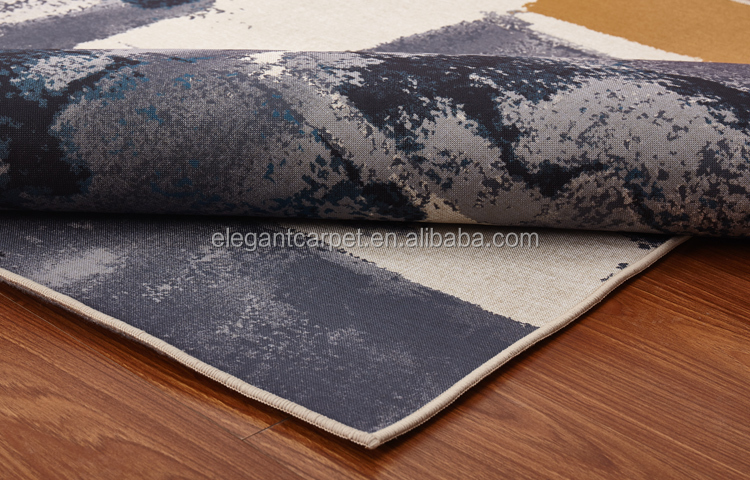Carpets: A Classification Overview
Carpets are classified based on their materials, textures, and patterns. Natural fiber carpets, such as wool and silk, are considered high-end and often used in luxurious settings. Synthetic fiber carpets, including nylon and polyester, are more affordable and widely used in commercial and residential spaces. The texture of a carpet refers to its appearance and feel, with some carpets having a smooth surface while others have a more rough or plush texture. Patterns can range from solid colors to complex designs, often created through weaving or printing techniques.
Carpets, a ubiquitous feature in homes and businesses, serve not only as functional flooring but also as decorative elements that enhance the aesthetic appeal of a space. With their ability to transform a room's atmosphere, it is essential to understand the different types available in the market. This article provides an extensive classification of carpets, discussing their materials, texture, patterns, and intended use.
Material Classification:
Carpets are primarily classified based on their material composition, which can be divided into four major categories:

1、Wool Carpets:
Merino wool: This type of wool is known for its softness, durability, and resilience. It is commonly used for crafting fine-quality, high-end carpets.
Persian Lamb: Known for its unique, longer fibers, Persian Lamb wool is often used in traditional and Oriental style carpets.
Alpaca: This type of wool is derived from the Alpaca, a South American llama-like animal. It is highly prized for its soft, lightweight, and hypoallergenic properties.
2、Synthetic Carpets:
Nylon: Nylon is a highly durable synthetic material that is often used in outdoor and indoor commercial-grade carpets.
Polyester: Polyester carpets are affordable and come in a wide range of colors and patterns. They are popular choices for homes and businesses.
Acrylic: Acrylic fibers provide a soft, luxurious feel and are often used in higher-end residential and commercial settings.
3、Hybrid Carpets:
Wool-Synthetic Blend: These carpets combine the best of both worlds, offering the luxury and natural feel of wool with the durability and affordability of synthetic materials.

Natural Fiber Blend: These blends feature a combination of different natural fibers like jute, bamboo, or coir, providing a unique and eco-friendly option.
4、Plant-Based Carpets:
Jute: Jute is a natural fiber derived from the jute plant. It is known for its durability and earthy aesthetic, often used in traditional and bohemian-style homes.
Bamboo: Bamboo is a sustainable and rapidly renewable material that is increasingly being used in eco-friendly carpet manufacturing.
Coir: Coir is derived from the husk of coconuts and is commonly used in outdoor and utility-grade carpets for its durability and resistance to moisture.
Texture and Pattern Classification:
In addition to material composition, carpets can also be classified based on their texture and pattern:
1、Plain Weave: This type of weave involves horizontal and vertical threads crossing each other at right angles, resulting in a simple, solid look.
2、Patterned Weave: Here, the threads are woven in specific patterns to create geometric or floral designs that add visual interest to a room.
3、Knitted Carpets: These are created using loops of yarn, resulting in a more three-dimensional texture that can include patterns or solid colors.

4、Tufted Carpets: In this technique, the yarn is inserted through the backing material using a tufting machine, creating a soft, velvety surface.
5、Loop Carpets: These feature loops of yarn that remain on the surface, creating a more industrial or contemporary aesthetic.
Intended Use Classification:
Lastly, carpets are also classified based on their intended use:
1、Residential Carpets: These are designed for use in homes and are typically made from soft, comfortable materials that prioritize luxury and warmth over durability.
2、Commercial Carpets: These are built for high-traffic areas like offices, restaurants, or public buildings. They are often made from more durable materials like nylon or polyester and designed to withstand heavy footfall.
3、Industrial Carpets: These are used in factories, warehouses, or other industrial settings. They are often made from strong, chemical-resistant materials like PVC or silicone and designed to withstand heavy machinery and harsh working environments.
Articles related to the knowledge points of this article:
Title: Mastering the Art of Wearing a Tie: A Comprehensive Guide to Tying the Finest Bow Ties
Title: Mastering the Art of Tie Clips: A Comprehensive Guide
Title: The Elusive Prices of Hermès Silk Scarves: A Comprehensive Guide
Laundry machine and down jackets: a perfect match or a potential disaster?



